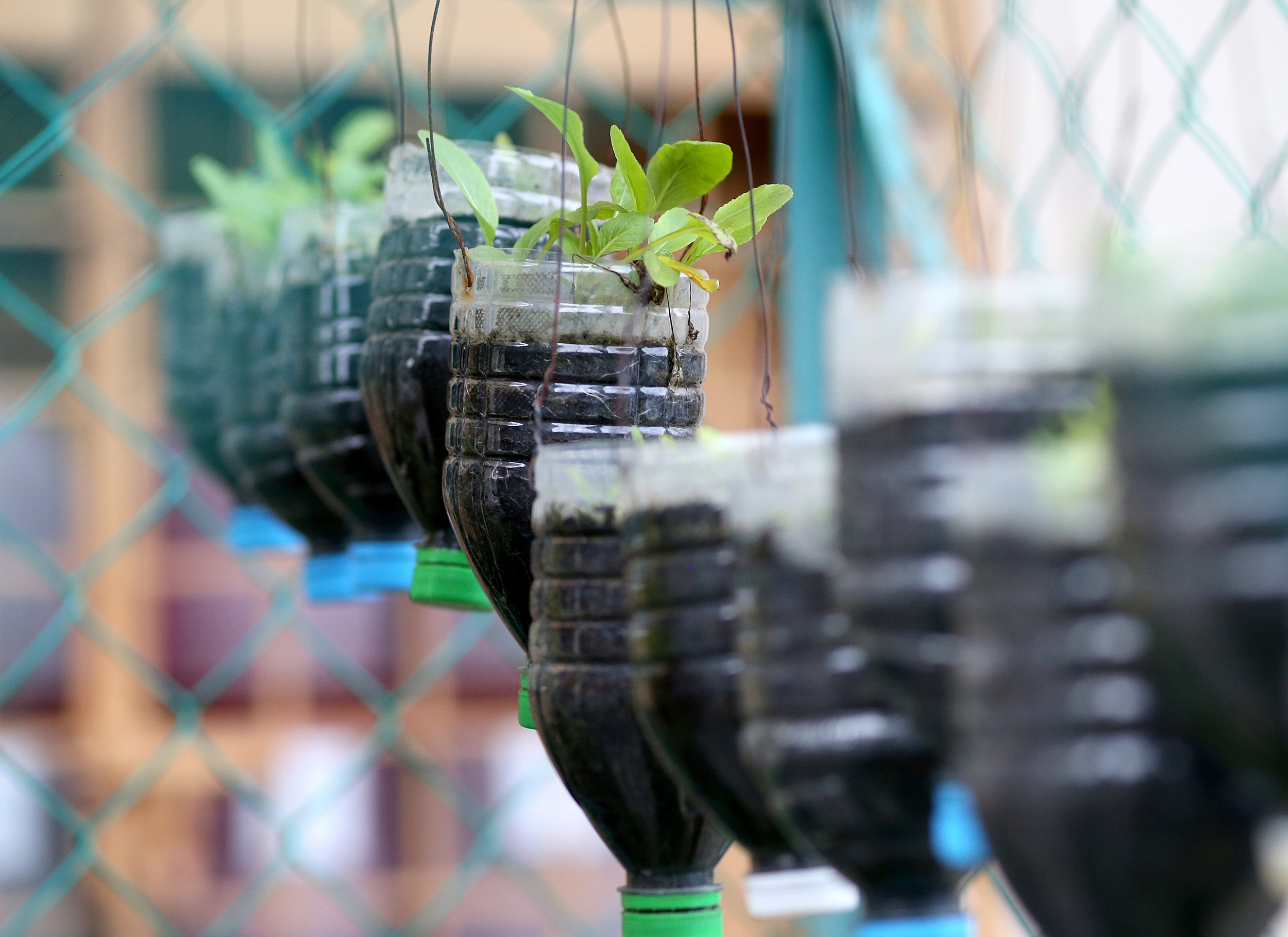THE DIFFERENCE BETWEEN RECYCLING AND REUSING EXPLAINED
You’ve probably heard of the 3 R's – reduce, reuse, recycle. A hot topic of conversation in grade schools, government policies, and households alike, these terms have gained even more attention in recent years due to their crucial role in reducing waste and promoting sustainability.
Unfortunately, environmental concerns have become increasingly pressing over time, with no sign of slowing down. So if you’re unclear on these terms, or simply want to more thoroughly understand the details, there’s no better time than now!
While the three R's are widely known and understood, there can be some confusion around the difference between recycling and reusing. Although most people can provide a basic explanation of their meaning, it's essential to understand the nuances between the two practices if we want to make more informed decisions about waste reduction and sustainability.
Luckily, we’re about to deep dive into all those little nuances, meanings, and processes – with plenty of information and examples to help you wrap your head around all of it! So stay tuned. You’re about to become an expert on all things recycling and reusing.
Recycling & Reusing: Quick Definitions
Let’s break it down quickly before we begin.
What is Recycling?
Recycling defines the process of transforming waste materials into new products. This process requires significant amounts of energy and resources to collect, transport, and process materials, but it helps to conserve natural resources and reduce waste.
Recycling also helps to reduce the amount of pollution generated from waste materials when they break down over time.
What is Reusing?
On the other hand, reusing, involves finding alternative uses for existing products or materials rather than discarding them after their original purpose has been served. This can mean donating old clothing or household goods to charities, repairing broken items, or using reusable bags instead of disposable ones. Reusing often requires less energy and resources than recycling, making it a more environmentally friendly option.
In this post, we'll delve deeper into the world of recycling and reusing by exploring their unique benefits, issues, and considerations. It’s important to understand practical examples of how these practices can be incorporated into various aspects of life, such as at home, in the workplace, and during travel. Finally, check out some challenges and limitations of these practices and learn how we can overcome them to create a more sustainable world.
Whether you're an individual looking to reduce your ecological footprint or a business seeking to adopt sustainable practices, understanding the differences between recycling and reusing and incorporating them into your daily life is key to building a more environmentally responsible future. So let's explore the world of recycling and reusing together and discover how we can all make a positive impact on the planet.
A Fun Fact about Recycling
It might come as a surprise, but recycling has a long history that dates back to ancient civilizations, like the Romans and Greeks.
These societies recognized the value of reusing materials, especially metals, by melting them down and creating new objects. For instance, the Romans would frequently melt down old statues and coins to produce new sculptures and currency. This practice demonstrates that the concept of recycling and reusing resources has deep roots in history and has evolved over time to address the environmental challenges of our modern era.
Today, recycling has become an integral part of waste management and is considered a crucial tool in reducing waste and conserving natural resources. The benefits of recycling are manifold and include reducing the need for landfills, conserving energy, decreasing greenhouse gas emissions, and promoting sustainable consumption patterns.
Let’s Start With Recycling
Recycling is the process of transforming waste materials into new products. It involves collecting, sorting, reprocessing, and manufacturing. From plastic bottles to old newspapers, recycling allows us to repurpose items that would otherwise end up in landfills. In this section, we'll explore the definition of recycling and its process, discuss its benefits, and talk about the different types of materials that can be recycled.
Recycling involves collecting and sorting materials such as paper and plastics. These materials are then reprocessed into new products or materials. The process starts with collection, which can be done through curbside pickup or drop-off centers. Next, the materials are sorted based on their type and quality. After sorting, the materials are reprocessed, which can include shredding, melting, or washing. Finally, the materials are manufactured into new products.
Obviously, this process has significant environmental and economic benefits. The main idea is that, by repurposing materials, we conserve natural resources and decrease energy consumption. This also reduces the amount of waste sent to landfills, which can help reduce pollution. Additionally, recycling provides economic benefits like creating jobs and saving money on raw materials.
What Materials Can be Recycled?
Many types of materials can be recycled, including paper, cardboard, plastic, glass, and metal. However, not all materials are recycled in the same way. For example, paper can be recycled up to seven times, but it must be free of contaminants like food and grease. Plastic, on the other hand, has many different recyclable types, each with their own specific process and difficulty levels. Look for a recycling symbol with the plastic type's corresponding number on the container or packaging to determine its recyclability. Be sure to read up on the specific recycling rules and practices in your area as well as anywhere you may be traveling!
Next Up: Reusing
Reusing is the process of using an item or product multiple times instead of discarding it after a single use. Unlike recycling, which involves breaking down and transforming waste materials into new products, reusing aims to extend the lifespan of an item, without necessarily altering it. This can include using a water bottle multiple times, repairing a broken appliance, or passing clothing down to another person.
Reusing has several benefits, both for individuals and the environment. It conserves resources by reducing the need for new products and materials, which in turn reduces energy consumption and pollution. Additionally, reusing can save money, as it often eliminates the need to purchase new items. Finally, reusing promotes a more sustainable lifestyle by encouraging people to consume less and be more mindful of their purchases.
What Are Some Different Ways to Reuse Materials?
There are many easy ways to reuse materials instead of throwing them away. Repurposing is one popular method, which involves taking an item and using it for a different but fairly similar purpose, without altering the core function of the item. For example, an empty jam jar can be used as a storage container for something other than jam.
Repairing and maintaining items is also a way to reuse them. Fixing a broken chair or applying a fresh coat of paint can extend its lifespan and reduce the need for replacement.
There’s also the option of passing down or selling an item to be used by someone else. This can be in the form of hand-me-downs among family and friends, or on a commercial level like Facebook Marketplace or Goodwill.
Another extremely easy way to get in the habit of reusing is to simply replace single-use items with reusable items in your daily life and shopping habits. Ditch single-use plastic water bottles and treat yourself to a reusable water bottle. Throw some stickers on it, carabiner it to your backpack… you can even get an insulated one to keep your beverage cold all day! Look into replacing similar single-use products like reusable sandwich bags, period products, and grocery bags. Saving money while saving the planet? We can get behind that!
What about Upcycling (or D.I.Y.)?
With the rise of the internet and popular videos, upcycling has become increasingly popular in recent years. Also known as DIY (do-it-yourself), it’s a form of at-home recycling that also incorporates some aspects of reusing.
DIY projects are generally simple and fun craft projects with the same basic concept. They can be as simple as making a flower pot by cutting and painting a tin can. Or as difficult as cutting up an old car to make a living room couch (probably don’t try this one at home)! To get started simply hop on the internet (Pinterest is best) and get those creative juices flowing.
The Difference Between Recycling and Reusing
The key difference between recycling and reusing is in their approach to waste. Recycling focuses on the end of a product's life, while reusing aims to extend the lifespan of a product. The decision to recycle or reuse depends on several factors, including the material, the item's condition, and the type of waste generated. In situations where the item has reached the end of its lifespan or is damaged beyond repair, recycling is often the best option. However, when an item is still functional and can be used again, reusing is the more sustainable choice. For example, choosing to reuse a water bottle instead of recycling it would conserve energy and resources.
Both recycling and reusing have an overall positive environmental impact. Recycling conserves resources by reducing the need for new materials and reduces pollution by diverting waste from landfills. Additionally, recycling saves energy, as it requires less energy than producing new materials. Reusing reduces the need for new products and reduces waste. By extending the lifespan of an item, reusing promotes a more sustainable lifestyle and reduces the amount of waste sent to landfills. This also leads to less consumption of new products and the energy used to make them. It’s a win-win!
So What’s the Problem?
While recycling and reusing both come with many benefits, they don’t come without challenges and limitations. One common issue is contamination, which can reduce the quality and value of recycled materials. Additionally, recycling infrastructure can be limited or inadequate, making it difficult to recycle certain materials. Reusing also faces challenges, such as limited availability of reusable products and cultural norms that prioritize new over used items. Things like clothing trends and desire to own the latest tech can set us back in the fight against climate change. This doesn’t mean you can’t rock some new threads or indulge in the newest headphones once in a while – just do your best to keep your purchases reasonable.
Before adding that cute new sweater to your cart, consider carefully if you think you’ll really wear it next winter. You could also opt to shop sustainably by thrifting or springing for a trusted eco-friendly brand over fast-fashion.
Government policies and regulations can play a role in overcoming these challenges. Policies that promote recycling and provide financial incentives for businesses to use recycled materials can increase demand for recycled products. Additionally, regulations that require manufacturers to use more sustainable materials or reduce packaging waste can reduce the need for recycling and reusing.
There are already some programs in the United States that promote the three R’s. For example, BottleDrop charges customers an initial fee for bottled or canned beverages then returns the fee when the cans are returned at a terminal. Promoting and encouraging more policies such as this are key endeavors in the fight against climate change – so don’t hesitate to get involved!
To Wrap it Up…
Overall, both recycling and reusing are important practices that contribute to sustainability. By understanding their differences, benefits, and challenges, we can make informed decisions about how to reduce our environmental impact. We can stay informed on the best decisions to make in any scenario. Whether it be reducing, reusing, recycling, or something else entirely, these efforts will help us build a more sustainable future for generations to come.











